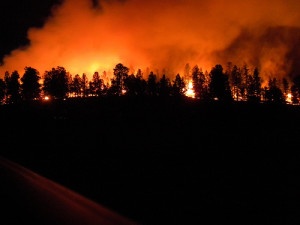We have much more to do and your continued support is needed now more than ever.
Accounting for Climate Change
New Guidance a Major Step Forward for Wildlife

The guidance tells agencies to quantify both the direct and indirect, such as the burning of coal or oil, carbon pollution emissions impacts of federal actions. It also asks federal agencies to evaluate how climate change impacts will affect or be affected by projects. For example, how precipitation changes or sea level rise will create environmental impacts over time.
The final guidance is an improvement over a draft guidance released two years ago. Primarily, the final guidance does not excuse agencies from analyzing climate emissions if projects are expected to release under a certain amount of emissions. It also exempts actions concerning public lands.

The guidance informs environmental reviews pursuant to the National Environmental Policy Act (NEPA). NEPA requires federal agencies to take a “hard look” at the environmental impacts of projects. Depending on the significance of the impacts of a project, agencies prepare either a comprehensive environmental impact statement, or a finding of no significant impact. Moreover, some projects are categorically excluded from NEPA review.
Quantifying Carbon Pollution
The guidance acknowledges that all projects potentially contribute to carbon emissions. These emissions need to be quantified unless they reasonably cannot be. However, even then, there should be a qualitative analysis.
By making clear that incremental impacts are still important to take into account, the guidance removes a primary excuse agencies have used to ignore climate impacts. This should work to ensure that a meaningful look at the climate effects of a projects will occur for all major federal projects that may contribute to climate change.
The agencies are asked to evaluate the climate impacts of all various alternatives being considered, including no action, and evaluate ways to mitigate climate emissions through measures like carbon sequestration.
Changes on the Land

The guidance acknowledges that federal actions that affect land use can have significant climate consequences. This means that agencies should consider how land use decisions result in emissions, looking both short and long term. The guidance acknowledges that some land use decisions, like certain forestry activities, may have short term emissions increases, but long term emissions reductions.
The guidance further encourages agencies to consider land use based policies such as “carbon sequestration (e.g., forest, agricultural soils, and coastal habitat restoration), [and] sustainable land management practices” as mitigation for emissions.
If done properly, and balanced with how these decisions impacts wildlife and habitat, the guidance should encourage smarter and more far-sighted land use based decisions that impact emissions and serve to mitigate the impacts of those emissions.
More Resilient Alternatives
The guidance also instructs agencies to consider how the climate change we cannot avoid will affect a project. The guidance asks agencies to evaluate what effect factors like sea level rise, changes in snow pack and precipitation, and other known climate change occurrences will have on a project.
If agencies appropriately analyze these impacts, this should result in projects that are more resilient over time and serve to help communities and wildlife communities adapt to the rapid changes global warming will bring.

Consistency with Climate Policies
The guidance asks that agencies look at whether projects are consistent with federal, state and local policies designed to limit carbon pollution. This is a big step towards ensuring major projects – like development projects, transportation projects, and land use decisions – are conducted in a manner that achieves important climate goals.
This is especially important in the wake of the Paris agreement to limit global warming to no more than 2 degrees Celsius above pre-industrial temperatures, as well as the President’s goal to reduce the nation’s emissions 26-28% by 2025. Agencies will also be encouraged to look at state and local policies like state emission reduction goals of states like California.
However, the guidance is far from perfect. For instance, it gives agencies substantial discretion in terms of the methodologies they choose to use to quantify carbon emissions. Agencies also need not quantify the costs of the climate impacts. If they do, the guidance does not mandate any particular method to account for costs like the social cost of carbon, which is used by several agencies and estimates the economic damage that results from increases in carbon emissions.
Nevertheless, overall, this guidance should serve to ensure that the impacts of climate change inform whether and how all federal projects should proceed.
Help NowHelp NWF continue its work to address climate change impacts






















